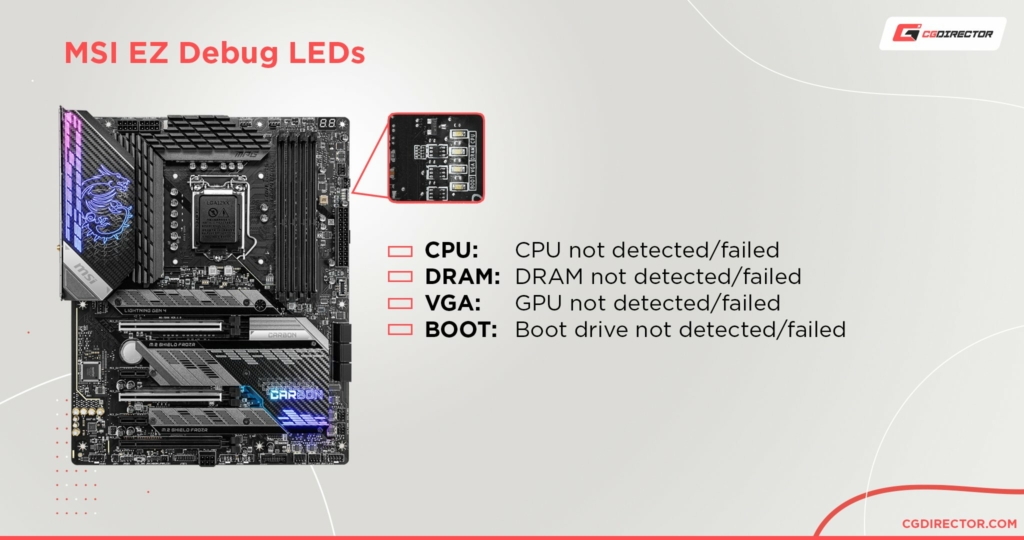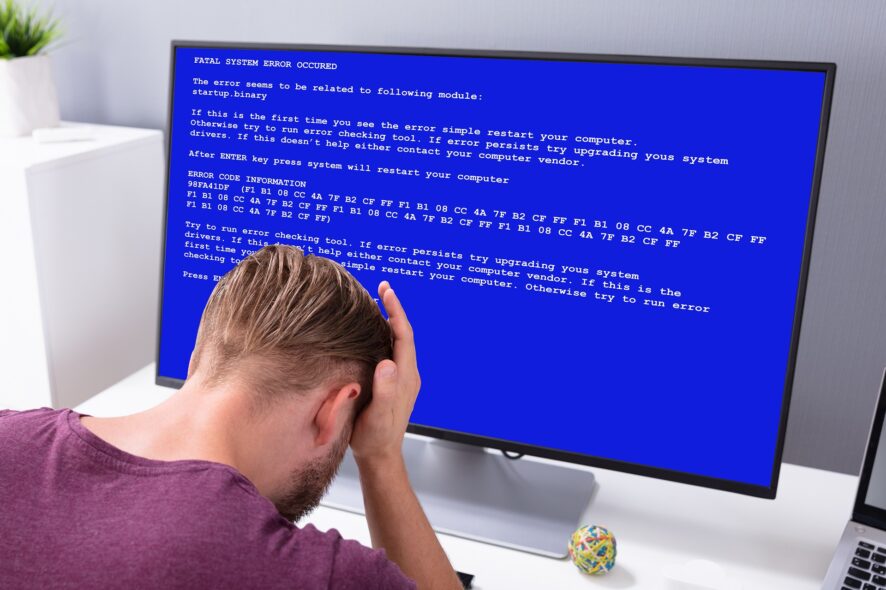We show you how you can easily identify the source of errors.
lord
01.27.2022 – There is no better moment than starting up your newly assembled or purchased computer at the first press of the button. But often this is just a false illusion that everything will be fine with our computer in the coming years. In most cases, the reality is much sadder than this, as we will have to deal with a lot of small and big problems when using a computer. Often these problems can be solved with a little attention, but unfortunately the situation is not always clear. In this post, we examine the most common computer malfunctions and their solutions, so that you don't necessarily have to call a mechanic at the first false start or strange noise.
The computer will not start
Every gamer's nightmare is the computer not turning on the next morning after turning it off for the night. It is almost certain that we are dealing with a hardware problem, because if there is a problem with our operating system, it will take some time to boot. In such cases, it is worth clarifying the basic things: let's check whether the power socket is connected, whether the power cable has slipped for some reason, whether the main switch of the power supply is in the correct position. If these are in order, we can look around the house. The LED or status display found on modern motherboards can be used to read the source of the error.

EZ Debug – In MSI, this is how the motherboard indicates the source of the error
Small LEDs on the motherboard indicate which component is preventing the device from starting. If we do not notice a problem here either, we can try to turn on the device “manually”. Look in the motherboard description for the two contacts responsible for turning on/off and short-circuit them (touch them together) with a screwdriver for example. If that doesn't work either, there's nothing you can do, and you'll have to narrow down the list of faulty components. Remove all unnecessary accessories and peripherals.
If the system does not start after that, we can already suspect a failure of one of the main components. We can measure the voltage values on the removed power supply with a multimeter, but this is definitely the category in which it may be useful to contact a professional mechanic, since it is difficult to measure motherboard faults or, for example, memories at home. Before doing that, we can try to breathe life into our computer with the help of borrowed components. If that doesn't work or we don't have the option, go to a professional service.
Continuously disconnect and connect peripheral devices
It is not uncommon for the USB port on our computer to die for some reason. Before it completely dies, it's common for devices connected to that port or group of ports to keep disconnecting and reconnecting, as if we were disconnecting and reconnecting them every second. Troubleshooting here is very easy, as we have to check if the specific device is working properly in another port. If yes, then USB is the culprit, if not, then it must be the peripheral. Many mice and keyboards come with detachable cables already, so it's worth looking for another Type-C or Micro-USB cable, just in case the one you've used so far breaks. It may be helpful to download the appropriate USB Chipset drivers from our motherboard website, but if the hardware has been running for months without problems, this won't help us.
Flashing image
There is no error phenomenon more evident than this. The image flashes on our screen, and sometimes we see shadows that are eerily different from what we expect. We can narrow things down to three possibilities, and it is worth ruling them out one by one. The first thing we need to do is check the cable and replace it. Hopefully our issue is resolved here, if not, then either our monitor controller or one of our video card ports has started to fail. If our screen is behaving this way on other devices, then the culprit is clear again. If the image from the other VGA port works perfectly, it will be responsible for disturbing us.
Strange noises from the engine room

Small component with more noise
Again, we can talk about 100% hardware error, but the problem is easy to fix in a few seconds. In general, the various propellers are responsible for a large portion of the noise that can be heard from the engine room. Let's remove the side panels of the case and take a look inside our computer. Normal errors can also occur, such as one of the internal cables coming into contact with the fan, but it is also possible that one of our fans has given up. If you identify a defective module, pull it from the motherboard or controller and order a new one.
Device freezes and restarts under load

Hardware sweating
Basically, two possibilities can arise in this case. The first is that we were able to reduce the size of our power supply a little and running the devices at maximum would require more power than a weak power supply can provide. It is worth making a rough calculation in this case “Prince Sultan University Calculator” On the Internet, it may quickly become clear whether we are experiencing this. Another possibility is overheating of our components, in which case the devices lose their performance, which can be felt in the form of crashes and a drop in FPS. We won't let you down here either, so you can check and interpret this data:
In addition to the above, of course, we can encounter many unique and more specific hardware problems, but through the checks suggested in the post, we can identify the source of the specific error phenomenon sooner.
You should also read this:
Is Sony's policy against selling used PlayStation game discs?














































